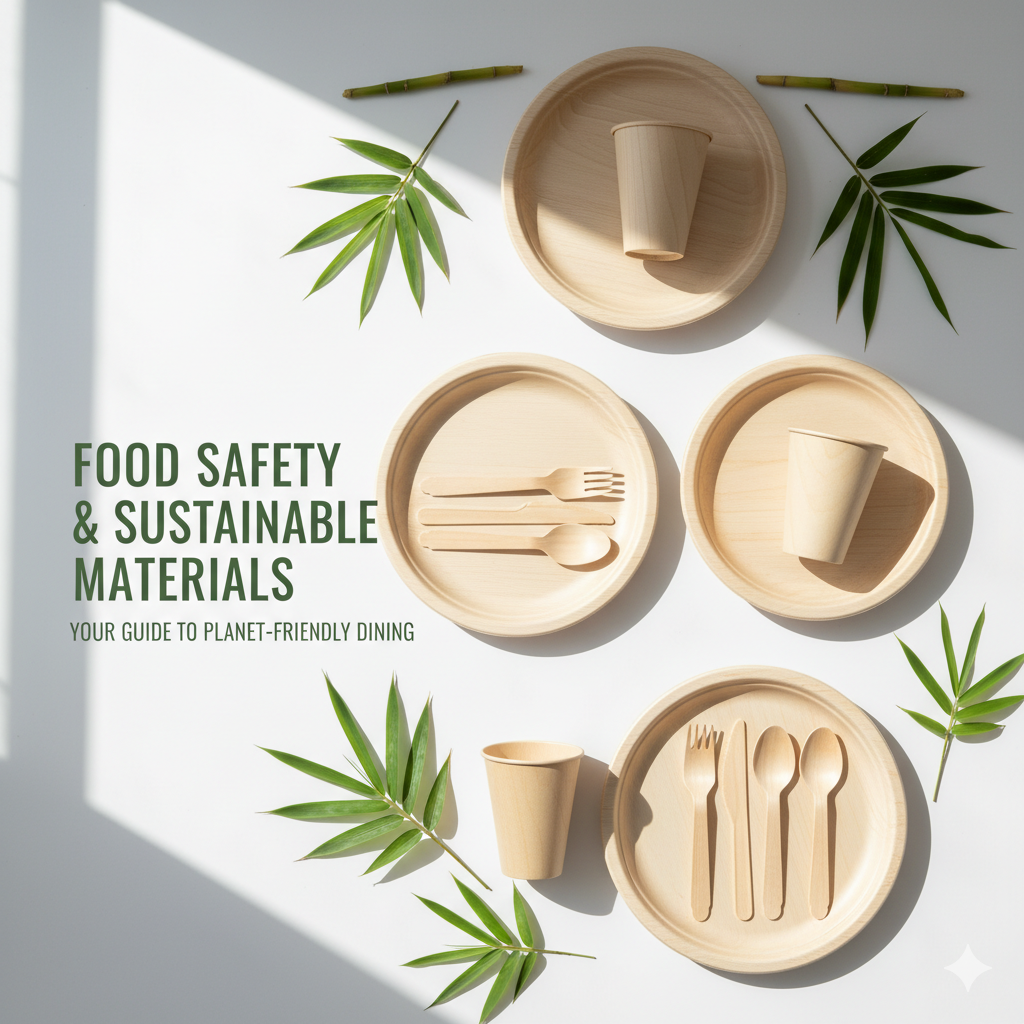
Many businesses want eco products, but they still worry about food safety.
Bamboo disposable plates are safe when made with natural materials, food-safe processes, and certified by trusted agencies.
Let’s break it down before you place your next bulk order.
Why Are Bamboo Disposable Plates Considered Safe?
Buyers want sustainability without risking their customers’ health.
Bamboo disposable plates are safe because they are made from 100% pure, natural bamboo fiber (not agricultural waste), are free from pesticides, fertilizers, and GMOs, and contain no harmful chemical additives like bleach, fluorescent agents, preservatives, plasticizers, or PFAS.

Let’s Look at the Facts
I always start by explaining this: bamboo isn’t just eco—it’s clean. PANABAM’s bamboo comes from our own plantations. We avoid pesticides. We cut and process under strict controls. That ensures the plate you serve food on starts and ends with safety in mind.
| Safety Feature | Bamboo Plates | Plastic Plates |
|---|---|---|
| Natural Source | Fast-growing, chemical-free bamboo | Fossil fuel-based, synthetic |
| Production Additives | Food-grade or none | Often includes BPA or phthalates |
| Degradation | 100% biodegradable, compostable | Non-degradable, pollutes environment |
| Certifications | FDA, BPI, FSC, ISO | Varies, often limited |
Real safety doesn’t come from a label. It comes from what’s behind it—process, testing, and intent.
What Are the Main Types of Bamboo Plates?
People assume all bamboo plates are made the same. That’s not true.
There are two major types: pressed bamboo plates and molded bamboo pulp plate.
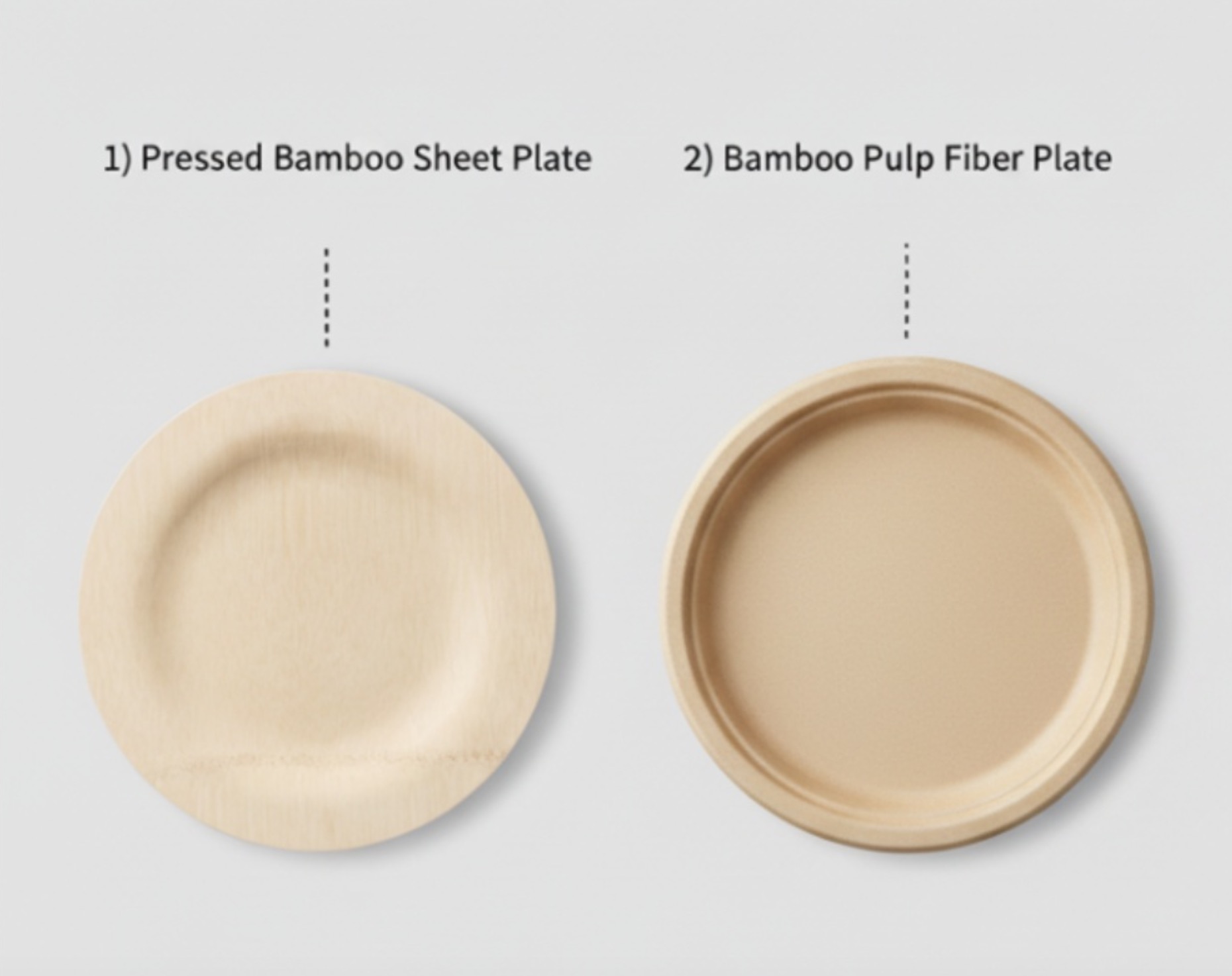
Understanding the Materials
Pressed plates are made by layering thin bamboo strips and bonding them with glue. Bamboo pulp plates are molded from mashed bamboo fiber and starch—no glue needed.
| Type | Material Composition | Characteristics |
|---|---|---|
| Pressed Bamboo Plate | Bamboo sheets + food-grade adhesive | Strong, sturdy, visible bamboo grain |
| Bamboo Pulp Plate | 95% bamboo pulp + 5% tapioca starch | Lighter, more uniform, ideal for hot food |
Each type serves different needs. You wouldn’t serve a grilled steak on a pulp plate at an outdoor festival. But you also wouldn’t microwave a pressed plate and expect safety.
How Are These Plates Actually Made?
Safety starts with how something is made. If a process cuts corners, the product can’t be trusted.
Pressed and pulp bamboo plates follow very different production steps, each with its own safety factors.
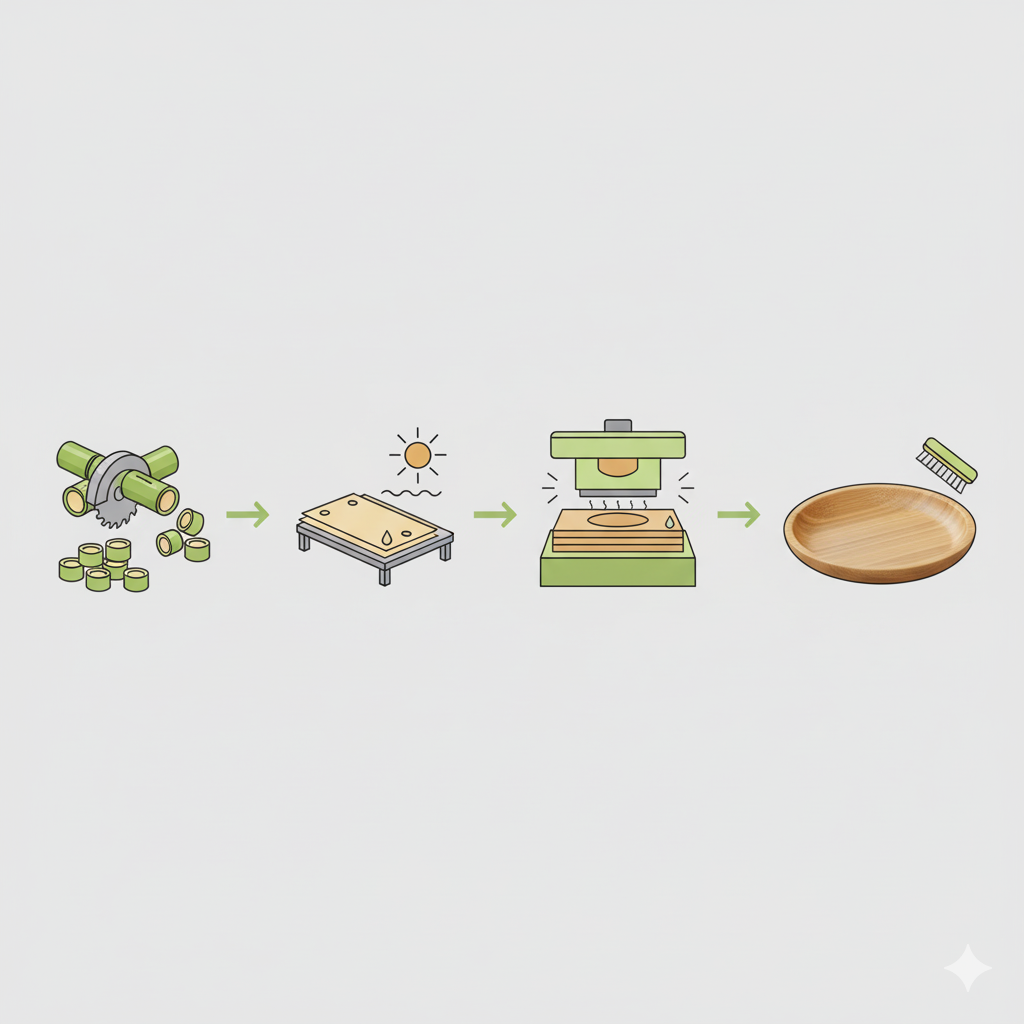
Pressed Bamboo Plate Manufacturing
- Cut mature bamboo into strips
- Shave down to ~0.3mm sheets
- Dry to remove moisture
- Layer sheets in alternating directions
- Apply certified food-grade adhesive
- Hot-press and mold into shape
- Sand edges smooth
- Optionally coat for oil or water resistance
- Final inspection and packaging
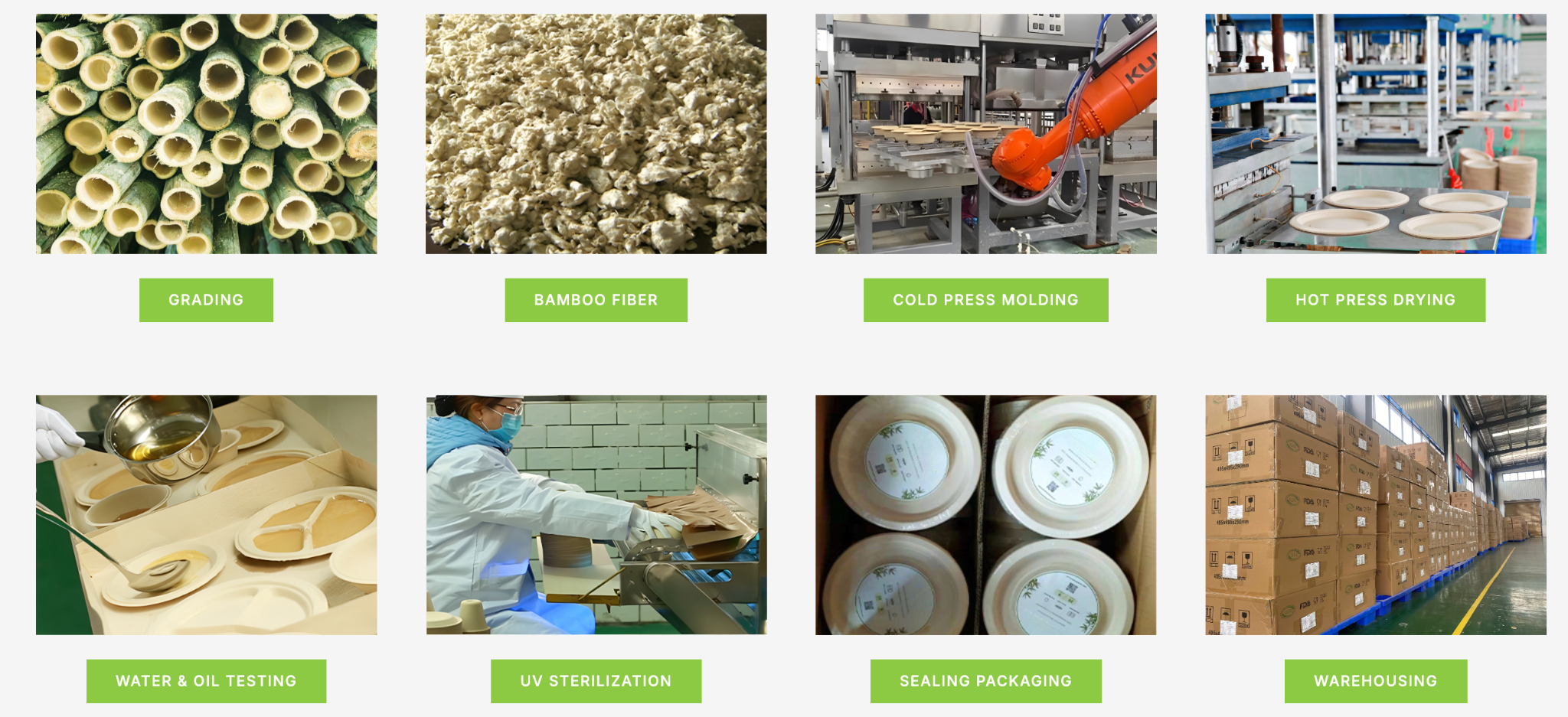
Bamboo Pulp Tableware Manufacturing
- Pulp fresh-cut bamboo into fibers
- Mix with tapioca starch
- Pour into molds
- Cold-press, then hot-dry to finalize shape
- Trim and smooth edges
- Quality test for heat, oil, and strength
- Package for shipping
Automation matters here. At PANABAM, our intelligent production lines reduce risk by eliminating inconsistency.
What Key Safety Features Should Buyers Watch?
It’s not just about looking good or holding food. Safety has layers.
Buyers should check certifications, raw material transparency, and product test data to ensure safety.
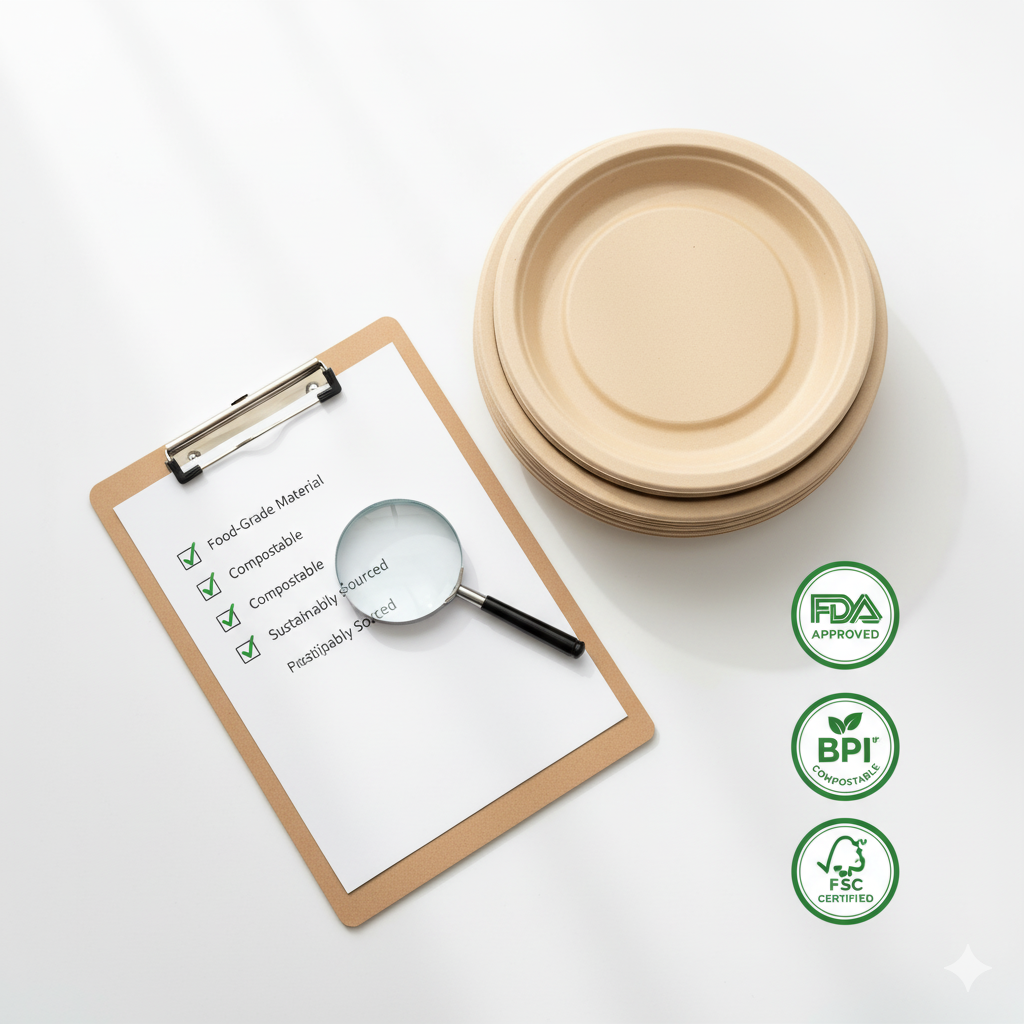
Buyer Safety Checklist
| Safety Factor | Why It Matters |
|---|---|
| 100% Bamboo Material | Ensures no harmful fillers or synthetic content |
| Food-Grade Glue or Binder | No toxic chemicals like formaldehyde |
| Certifications | FDA, FSC, BPI, LFGB confirm safety and legality |
| No Odor or Taste | Shows clean production, no chemical residue |
| Heat Tolerance | Prevents cracking or fire risk in high-use scenarios |
| Surface Quality | No splinters or sharp edges that can harm users |
I’ve seen buyers skip safety reports to save time. That always leads to problems. Invest in checking details.
How Heat-Resistant Are Bamboo Plates?
Some clients ask if they can use bamboo plates in the oven. That depends.
Pressed bamboo plates are less heat-resistant than pulp-based ones designed for reheating or baking.
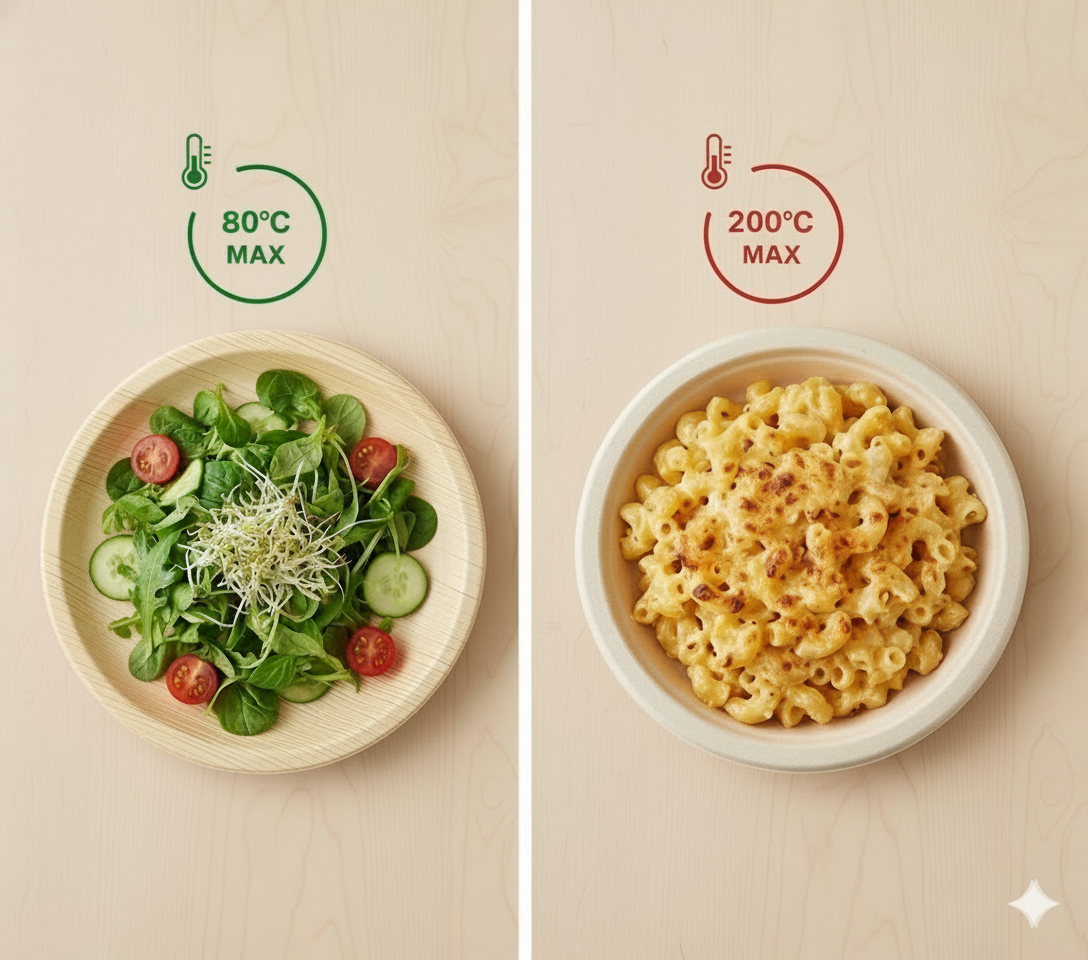
Performance in Heat
| Product Type | Heat Resistance | Use Recommendation |
|---|---|---|
| Pressed Bamboo Plate | 0°F to 175°F (~-18°C to 80°C) | Use with room temp or cold food only |
| Bamboo Pulp Tableware | Up to 200°C (392°F) | Safe for oven, microwave, and hot meals |
We always recommend clients to mark usage limitations on packaging or menus. That avoids customer misuse and liability.
Can Bamboo Plates Leach Chemicals?
Health-conscious customers worry about chemical migration. So do regulators.
Well-made bamboo plates do not leach harmful substances if made with safe adhesives and tested under food contact standards.

Breaking It Down
Pressed bamboo uses glue. If that glue contains formaldehyde or unregulated agents, it may leach. PANABAM uses only FDA-approved glue. Pulp plates skip glue entirely, reducing this risk.
| Product Type | Leaching Risk Level | Safety Strategy |
|---|---|---|
| Pressed Bamboo Plate | Low (if certified glue) | Test each batch for chemical migration |
| Bamboo Pulp Plate | Very Low | No synthetic adhesive = safer under heat |
I personally review third-party test reports before bulk shipments. That way, we avoid legal issues for clients.
How Do You Know If a Bamboo Plate Supplier Is Trustworthy?
With so many factories online, how do you choose? A low price doesn’t mean safety.
To source safe bamboo plates, review materials, audit certifications, and demand samples.
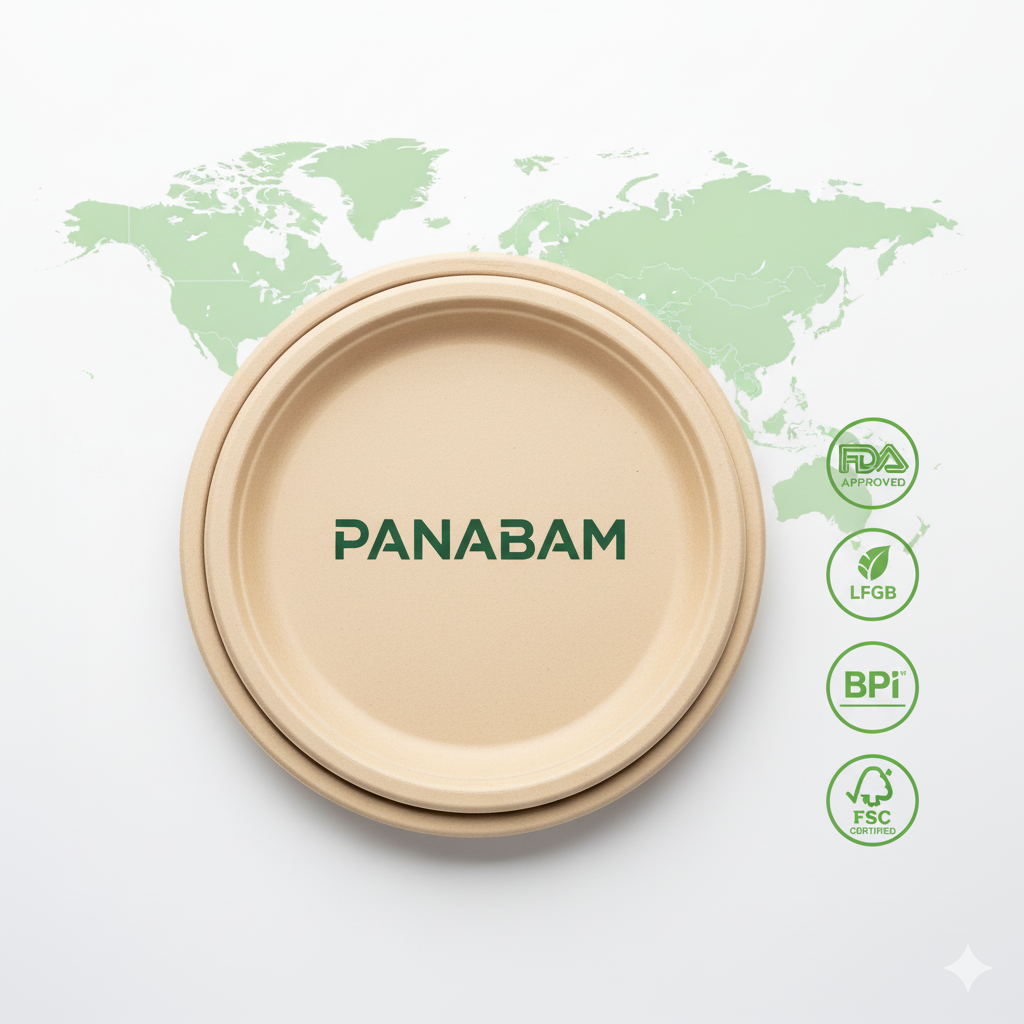
What to Ask Before Buying
| Buyer Question | What to Look For |
|---|---|
| What bamboo do you use? | Moso bamboo, chemical-free, traceable farms |
| Do you use food-safe glue? | Must be FDA or equivalent certified |
| Can you provide certifications? | Real, up-to-date, from credible agencies |
| What’s your heat tolerance range? | Match to your use case |
| Can I see your production line? | Photos, videos, or factory visit |
| Can I test a sample? | Always test oil, heat, and smell before buying |
At PANABAM, we proactively send clients a full sourcing report before their first order.
Why PANABAM’s Plates Are Safe and Trusted Globally
Anyone can claim eco or safe. Few prove it. We do.
PANABAM guarantees safety with automation, certification, and full raw material control from bamboo forest to factory.

What Sets Us Apart
| Area | PANABAM Commitment |
|---|---|
| Bamboo Source | Self-owned forests, no pesticide risk |
| Production Method | First intelligent bamboo fiber line in China |
| Quality Checks | 100% inspection, lab-tested every batch |
| Certifications | FDA, BPI, FSC, LFGB, ISO, compostable labels |
| Client Markets | USA, UK, Japan, Australia, EU, and more |
| Custom Options | Logo printing, size variation, packaging |
We’ve supported global buyers to transition from plastics to safe, natural bamboo cutlery—without compromising cost or performance.
Conclusion
Safe bamboo plates come from clean materials, certified adhesives, and transparent production processes.
FAQ: Common Questions
1. Are bamboo disposable plates completely plastic-free?
Yes. PANABAM bamboo plates contain no PE, PP, or PLA coatings. They’re made from 100% bamboo fiber and natural starch binders, ensuring they are PFAS-free and biodegradable.
2. Can bamboo plates be reused?
They’re designed for single use, especially in food service settings. However, pressed bamboo plates can sometimes be gently wiped and reused for dry foods if not soaked or exposed to oil.
3. Are bamboo plates microwave- and oven-safe?
- Pressed bamboo plates: for cold or room-temperature food only.
- Bamboo pulp plates: heat-resistant up to 200°C (392°F), safe for oven, microwave, and hot food.
4. How long do bamboo plates take to decompose?
Under normal composting conditions, PANABAM’s bamboo fiber plates decompose within 60–90 days, returning safely to the soil without releasing toxins.
5. Do bamboo plates change the taste or smell of food?
No. High-quality bamboo pulp and clean production processes ensure the plates are neutral in taste and odor, even when exposed to hot or oily foods.
6. What certifications ensure food safety?
PANABAM products are tested and certified under FDA (U.S.), LFGB (Germany), BPI (U.S. compostability), FSC (forest sustainability), and ISO standards.
7. How should I store bamboo tableware?
Keep plates in a cool, dry place, away from moisture and direct sunlight. Avoid long-term exposure to humidity, as it can affect structural integrity.

Ann
Hi, I’m Ann, and with over 5 years of experience in the foodservice industry, I’ve had the pleasure of working with restaurants and catering businesses to develop eco-friendly, tailored solutions that help you thrive in today’s green economy. I’m passionate about sustainability and committed to providing high-quality products that align with your values.
If you’re looking to make the switch to eco-friendly, sustainable tableware, I’m here to help! Reach out today, and let’s explore how we can support your business’s goals while contributing to a healthier planet.

